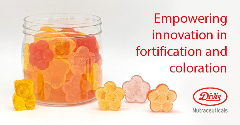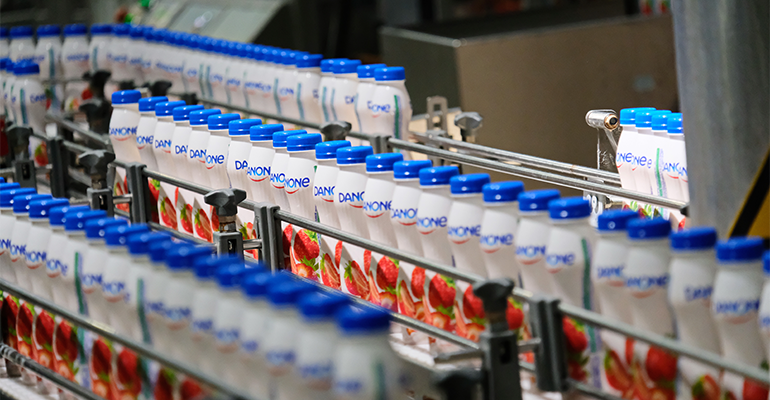News
European Consumers Await Next Generation Functional Dairy Drinks
17 Nov 2014The European dairy industry has operated in a challenging regulatory environment in recent years as the European Food Safety Authority (EFSA) worked its way through a series of health claim dossiers for functional products. A high level of uncertainty and lack of clarity has deterred wider innovation, with just one in five new liquid yogurt […]

The European dairy industry has operated in a challenging regulatory environment in recent years as the European Food Safety Authority (EFSA) worked its way through a series of health claim dossiers for functional products. A high level of uncertainty and lack of clarity has deterred wider innovation, with just one in five new liquid yogurt or cultured milk drinks in Western Europe making functional health claims in 2014, compared to one in three back in 2010.
Given that EFSA has made clear what health claims are permissible, the industry could now look to step up innovation using functional ingredients. Healthier functional dairy drinks represent a good opportunity to optimise brand potential, with well-known brands enjoying greater credibility when it comes to marketing functionality, especially in Italy and Spain. Meanwhile, a sizable minority of all consumers – more than a third in Spain (41%), Italy (38%) and France (35%) according to Mintel research – are ready to buy more functional foods and drinks as they get older. As such, many consumers anticipate a growing need for functional benefits and brands need to address this.
Europe’s aging population and typically affluent senior demographic form an attractive target market for functional dairy food and drink. This is certainly the case for leading brands in cholesterol-reduction and bone health drinks. However, millennials across Europe are both the main demographic for buying dairy drinks in general and for buying those products they consider to have health benefits or contain functional ingredients.
Mintel data suggests that companies should not necessarily focus on the older consumer, and the potential is there for cultivating younger consumers with convenient, on-the-go snack-orientated products sold on a lifestyle platform. Cholesterol and blood pressure, plus preventing cancer and dementia, remain key concerns for seniors, but more general health considerations are almost as important for younger groups, especially in Italy and Spain. In terms of the top drivers for functional food and drink purchase overall – bone health and heart health – millennials are nearly as motivated by these in Italy as older consumers.
As well as the broad appeal of functional benefits like heart, bone and digestive health, it is worth noting that consumers are now very familiar with leading functional ingredients. Between half and two-thirds of all Europeans in the five largest EU economies have heard of, and know what the function is, of vitamin D, omega-3 and added calcium.
In an ideal world, each consumer would have a healthy beverage custom-tailored to suit their particular requirements or concerns, but for the current mass market in dairy it may make greater sense to add more ingredients and accordingly cast the net wider. Very few functional brands now aim to cover more than a single benefit, but this may change with the emergence of more of a checklist approach that offers a single, multiple health benefit solution using a range of well-known ingredients.
Related news

Empowering innovation in fortification and colouration
13 Nov 2025
Divi’s Nutraceuticals offers a large portfolio of innovative, high-quality ingredients for foods, beverages, and supplements, with bespoke solutions and expert support for product success.
Read more
Danone highlights digestive health as potential ‘tipping point’ for food industry
13 Nov 2025
Danone is betting on a food industry “tipping point” that will bloat the market for healthy products, particularly those related to gut health.
Read more
Standing Ovation and Bel scale up casein production from dairy co-products
11 Nov 2025
Foodtech company Standing Ovation has partnered with cheese specialist Bel Group to manufacture dairy serums for industrial-scale casein production via precision fermentation.
Read more
New UPF standard hoped to offer consumers ‘coherence and clarity’
10 Nov 2025
Ingredients companies are being urged to enter “a new era of partnership and innovation” following the launch of the industry’s first non-UPF verification scheme.
Read more
Whistleblowers accuse UK meat industry of promoting cheap, unsustainable supply
7 Nov 2025
An anonymous group of industry insiders has accused the UK’s biggest food companies of systematically driving down meat quality and welfare standards.
Read more
Cottage cheese makes a comeback as consumers call for cleaner labels
6 Nov 2025
From ice cream to dips and ready meals, cottage cheese is experiencing a renaissance as a high-protein, clean ingredient for health-conscious consumers.
Read more
Bord Bia presents Irish dairy ingredient suppliers at Fi Europe
6 Nov 2025
Dairygold Co-operative Society, The Carbery Group, and Ornua Co-operative: Meet with sustainable producers of Irish dairy ingredients at Food ingredients Europe 2025, Hall 7.2 Stand M18.
Read more
Faravelli at Fi Europe: Showcasing FARA® functional solutions for food and nutra
28 Oct 2025
At Fi Europe 2025 in Paris (stand 72M39), Faravelli showcases FARA® Customized Functional Solutions and a wide ingredient portfolio for food and nutra – delivering quality, innovation, and expertise.
Read more
Agrigum Redefined FIBER
27 Oct 2025
Agrigum has transformed gum acacia into a natural, science-backed fibre that supports gut health, sustainability, and innovation across global food and nutrition applications.
Read more
Expanding boundaries in food & beverage innovation
23 Oct 2025
IMCD and FrieslandCampina Professional expand partnership to deliver Kievit® across EMEA, enabling brands to enhance quality and accelerate time-to-market for tomorrow’s food & beverage creations.
Read more